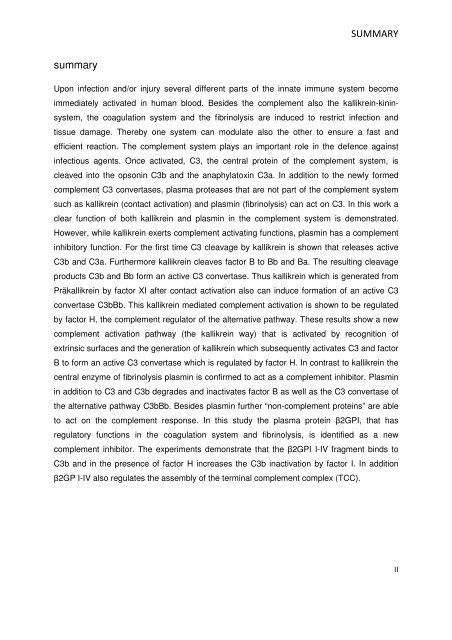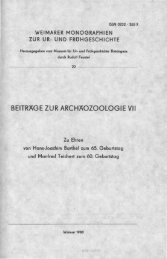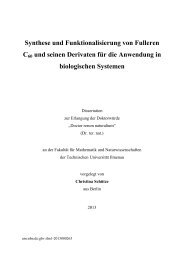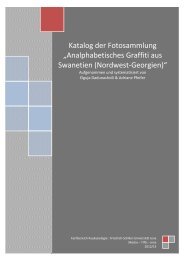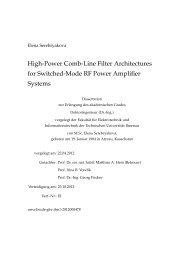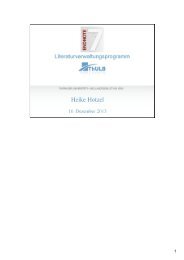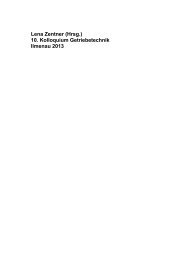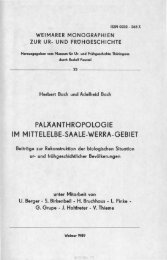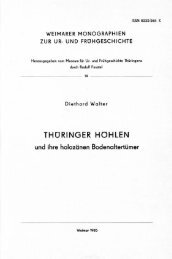Bibliothek.pdf
Bibliothek.pdf
Bibliothek.pdf
Erfolgreiche ePaper selbst erstellen
Machen Sie aus Ihren PDF Publikationen ein blätterbares Flipbook mit unserer einzigartigen Google optimierten e-Paper Software.
SUMMARY<br />
summary<br />
Upon infection and/or injury several different parts of the innate immune system become<br />
immediately activated in human blood. Besides the complement also the kallikrein-kininsystem,<br />
the coagulation system and the fibrinolysis are induced to restrict infection and<br />
tissue damage. Thereby one system can modulate also the other to ensure a fast and<br />
efficient reaction. The complement system plays an important role in the defence against<br />
infectious agents. Once activated, C3, the central protein of the complement system, is<br />
cleaved into the opsonin C3b and the anaphylatoxin C3a. In addition to the newly formed<br />
complement C3 convertases, plasma proteases that are not part of the complement system<br />
such as kallikrein (contact activation) and plasmin (fibrinolysis) can act on C3. In this work a<br />
clear function of both kallikrein and plasmin in the complement system is demonstrated.<br />
However, while kallikrein exerts complement activating functions, plasmin has a complement<br />
inhibitory function. For the first time C3 cleavage by kallikrein is shown that releases active<br />
C3b and C3a. Furthermore kallikrein cleaves factor B to Bb and Ba. The resulting cleavage<br />
products C3b and Bb form an active C3 convertase. Thus kallikrein which is generated from<br />
Präkallikrein by factor XI after contact activation also can induce formation of an active C3<br />
convertase C3bBb. This kallikrein mediated complement activation is shown to be regulated<br />
by factor H, the complement regulator of the alternative pathway. These results show a new<br />
complement activation pathway (the kallikrein way) that is activated by recognition of<br />
extrinsic surfaces and the generation of kallikrein which subsequently activates C3 and factor<br />
B to form an active C3 convertase which is regulated by factor H. In contrast to kallikrein the<br />
central enzyme of fibrinolysis plasmin is confirmed to act as a complement inhibitor. Plasmin<br />
in addition to C3 and C3b degrades and inactivates factor B as well as the C3 convertase of<br />
the alternative pathway C3bBb. Besides plasmin further “non-complement proteins” are able<br />
to act on the complement response. In this study the plasma protein β2GPI, that has<br />
regulatory functions in the coagulation system and fibrinolysis, is identified as a new<br />
complement inhibitor. The experiments demonstrate that the β2GPI I-IV fragment binds to<br />
C3b and in the presence of factor H increases the C3b inactivation by factor I. In addition<br />
β2GP I-IV also regulates the assembly of the terminal complement complex (TCC).<br />
II


